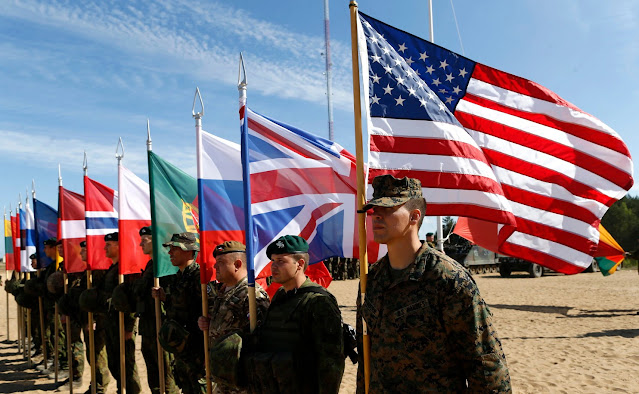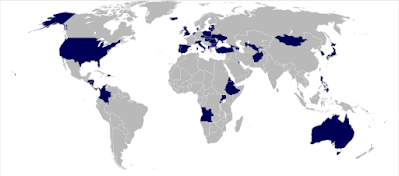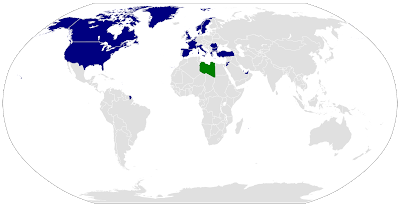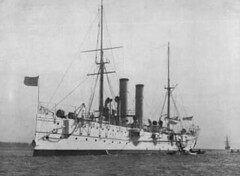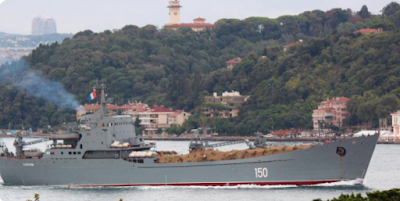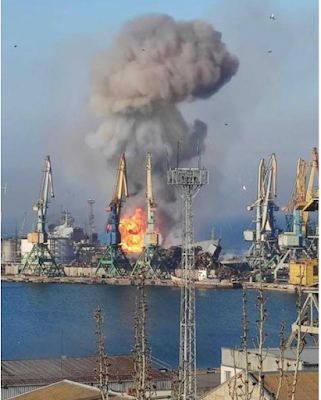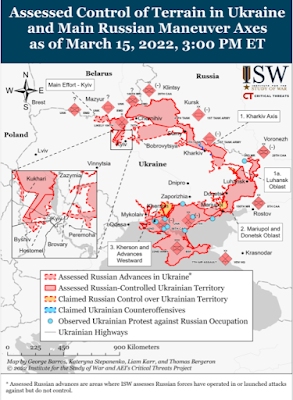If you care about the truth, if you care about our ability to deter war west of Wake, then it is time to stand against one of the most destructive attempts to sideline our nation’s military power seen in a long time, the consultant-speakish concept being pimped throughout the Beltway, “Integrated Deterrence.”
As we must, let’s go to the source for a first-person definition. As per DODNews back in December;
Colin Kahl, the undersecretary of defense for policy, fleshed out the concept ... He said the concept "will inform almost everything that we do."
Secretary of Defense Lloyd J. Austin III has spoken about the concept since taking office last January. He calls it a new way of approaching deterrence.
Kahl discussed both sides of the concept: integration and deterrence. "In terms of integrated … we mean, integrated across domains, so conventional, nuclear, cyber, space, informational," he said. "[It is also] integrated across theaters of competition and potential conflict [and] integrated across the spectrum of conflict from high intensity warfare to the gray zone."
The concept in this case also means integration of all instruments of national power. Most importantly it means being "integrated across our allies and partners, which are the real asymmetric advantage that the United States has over any other competitor or potential adversary," Kahl said.
So, how did that work out to keep Russia from Ukraine? And don’t say we’ve never integrated with allies and partners. I and millions of others literally mad a multi-decade career out of it. Don’t say diplomacy is something new. Don’t say economic sanctions are something new. No, this isn’t new - and neither is what is trying to be done. This is cover to weaken our military power in pursuit of a softer theory of power.
As typical from the group presently running our national security apparatus, they will not let real world experience get in the way of their too-clever-by-half theories emanating from their preferred think-tank holding pools and academic fever swamps. No. Can’t do that.
On Saturday from what I believe is a tear in the space-time continuum from a parallel universe, the WaPo has an outright bizarre article; Russia’s failures in Ukraine imbue Pentagon with Newfound Confidence;
I read this twice this weekend just to make sure I was reading what I just read.
It is written as if no one has a memory longer than six weeks – or the authors don’t think their readers do.
BEHOLD!
…one month into Russia’s invasion of Ukraine, senior Pentagon officials are brimming with newfound confidence in American power, spurred by the surprising effectiveness of U.S.-backed Ukrainian forces, Russia’s heavy battlefield losses and the cautionary lessons they believe China is taking from the war.
Who is this “senior Pentagon official” and will someone please get in touch with their doctor to confirm they are taking their meds?
Did we deter war? Didn’t we advise Zelenskyy to either retreat to Lviv or leave the country before the Russian invasion even start or not? Was our alliance ready? Did we show resolve when our own embassy evacuated?
I ask this is a very serious question - who paid for this to be written?
Gaslighting is an overused phrase, but in this case, there are few other words that describe what is being done. No objective, knowledgeable, and educated person can really believe what they are writing.
Read it an come back. I’m serious. Don’t just ride my pull-quotes. Read it and come back.
I don’t have the time to fisk the whole thing – but if you are not concerned about who this nation defines as The Smartest People in the Room ™, well then you should be.
Start with someone who should know better than what he is saying, Obama’s ambassador to NATO, Ivo Daalder;
The United States also has relied heavily on European allies, who have often taken the lead in leveling crippling sanctions on the Russian economy at considerable costs to themselves. It’s not yet clear whether the current unity will fracture if the war drags on for months.
“We need to demonstrate our [collective] power every day, and we can only demonstrate it if we keep everybody together,” said Ivo Daalder, president of the Chicago Council on Global Affairs and a former U.S. ambassador to NATO. “This is not something the U.S. has traditionally done well.”
The European allies who did nothing to push back against Nord Stream I or II? The ones who initially balked at SWIFT sanctions?
Allies good; America bad. State good; Pentagon bad.
Fine, get it ... standard issue natsec left world view. Wonderful. Got it.
Also, we kept NATO together fairly well in the Balkans campaign in the 1990s. Even though laded with national caveats and capability gaps, we did a fairly good job getting NATO to run the AFG campaign from 2002 until shortly after they culminated in the summer of 2007, and we had to start taking the keys back. Alliances of free nations is hard work … but we have a not-too-bad record of it considering there are now 30 nations in the alliance (as of today). When there have been problems, it wasn’t the USA who was the problem nation; DEU, TUR, HUN, FRA – pick your crisis – the USA was not the one who has a habit of not ponying up as a troop contributing nation.
Traditionally we have done it very well for the right causes.
That is an arguable point – but this is just … wrong;
Pentagon officials contend that there was little they could do to deter Putin, who expected a quick and easy victory in Ukraine, and argue that their broader strategy of “integrated deterrence” — which leverages economic, diplomatic and military power to dissuade potential aggressors — has so far worked to stop Putin from expanding the war into NATO territory. The Biden administration has made integrated deterrence the cornerstone of its soon-to-be released National Defense Strategy, which was delayed as the threat of an invasion grew.
Integrated Deterrence "so far worked to stop Putin from expanding the war into NATO territory." What? Who is briefing these people? I guess Integrated Deterrence "so far worked to stop Cuba from joining the war and expanding the war into Florida." OK. Fine.
I love the last part. “We realized what we wrote was immediately OBE, so we want to change things so we don’t look like idiots.”
Smart, but tells you how horrible that pig must have been. It will be interesting to see how they make a silk purse out of it.
They know – like last summer in AFG, that they failed. They are not good at their job.
The diplomats failed. The intel community failed. The military aid we did supply to UKR was not enough to make her a tough enough target for RUS.
Regulars on the Front Porch have known for years in writing and on Midrats I asked that we send our best JOs to UKR as observers. We didn't. Hey, I'm a proud Floridian, but the last US unit in UKR was Florida National Guard. A lot of the training on the air side of the house was done by Air National Guard. The Pentagon was clearly looking elsewhere to employ their top units and career personnel. Like we saw in AFG and IRQ, they found priorities everywhere else but where the actual real-world threat was manifesting itself.
The uniformed side of the house needs to own this failure, but – the uniformed military is but a tool of the Executive Branch and Congress. It does what it is told to do inside the laws of our nation. It does nothing on its own. It does nothing without oversight.
A longer-term challenge for the Pentagon, which is prone to its own fits of military hubris, will be to recognize the limits of its power and the crucial role U.S. allies will play in containing Russian and Chinese global ambitions, according to analysts and even some senior Pentagon officials. In the 1990s and early 2000s when the United States was at the height of its power, U.S. leaders often treated allies as an afterthought. Former President Bush launched the invasion of Iraq in 2003 over the objections of allies such as Germany and France.
“We had this sense where we could do it all and the allies were a problem,” said Daalder, the former NATO ambassador.
Where do I start?
“The Pentagon” is not alone in hubris, but its hubris is a byproduct of what it received from CINC’s Intent and Direction and Guidance. Those are informed by civilian appointees and advisors. Department of State, Commerce, etc? What about their hubris? If you are going to sell “Integrated Deterrence” then you have to accept “Integrated Failure.”
Let’s go back to alternative-universe Daalder.
Did we treat our allies as an “afterthought” during Desert Storm? Look for yourself;
Did we treat our allies as an “afterthought” during the 1990s wars in the breakup of Yugoslavia? No.
Did we treat our allies as an “afterthought” in AFG? No. We gave it to them for most of the 00’s.
Did we treat our allies as an “afterthought” even in the 2003 invasion of Iraq? You tell me, here are the nations of the “Coalition of the Willing.”
Did we treat our allies as an “afterthought” in the 2011 attack on Libya? You tell me, here they are.
The map gets smaller, but so was the justifications for each war. That isn't the fault of The Pentagon.
This push for the already failed concept of “Integrated Deterrence” is just another way to attempt to dilute efforts to build a strong military deterrence against nations who wish to supplant us and our allies by themselves or with others from our premier position on the world stage.
A strong military is the shield behind which diplomatic, economic and informational efforts can be made to best shape the international order to best serve the interests of our nation and its friends.
RUS invaded UKR because UKR was not in their mind a hard target. European NATO was seen as easily threatened into inaction due to their demilitarization and decades-long slide in to dependency to RUS energy. Our diplomats were seen as weak sisters on the stage willing to do almost anything to get a deal with Iran again.
Let’s go back to that first quote:
…senior Pentagon officials are brimming with new found confidence in American power, spurred by the surprising effectiveness of U.S. backed Ukrainian forces…”
Again, taking credit for the performance of UKR when at D+0 we were trying to talk Zelenskyy to either bug out to Lviv or just leave the country? We were depressing their will to fight, not enhancing it. Will is the primary driver here – and all credit for that goes to the Ukrainians.
This “brimming” is either delusional or a bold-faced bluffing lie.
It is all kind of insulting, isn't it? It isn't that they are lying to everyone, it is that they expect you to join in their lie.
The only people who gain here from this attempt to dilute military power are neither the USA nor our partners and allies.
UPDATE: For those who have a WSJ subscription, Rep. Mike Gallagher (R-WI) has a few thoughts on Integrated Deterrence as well.
We have good company.








